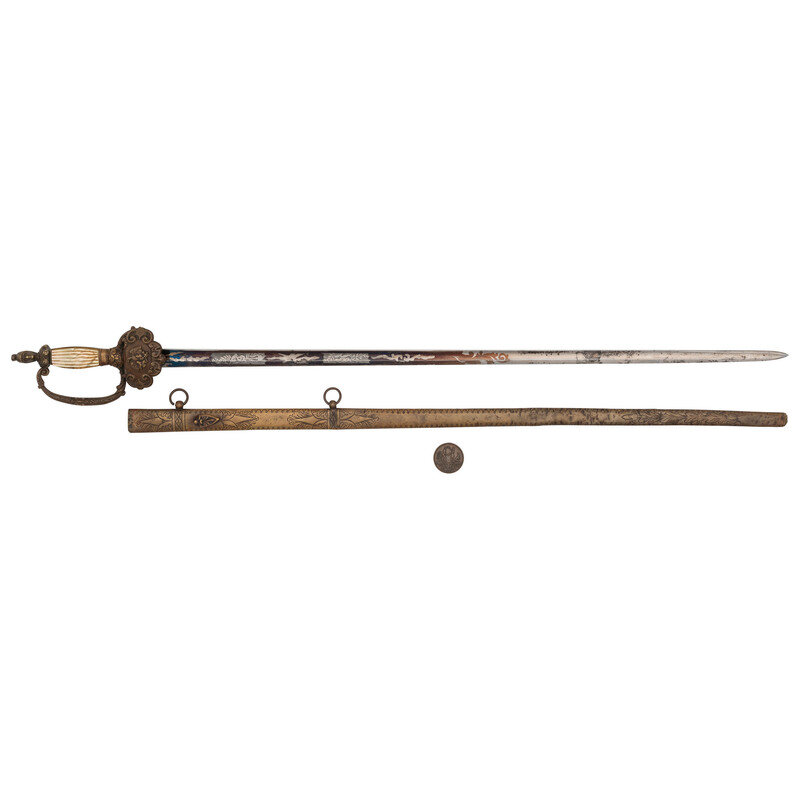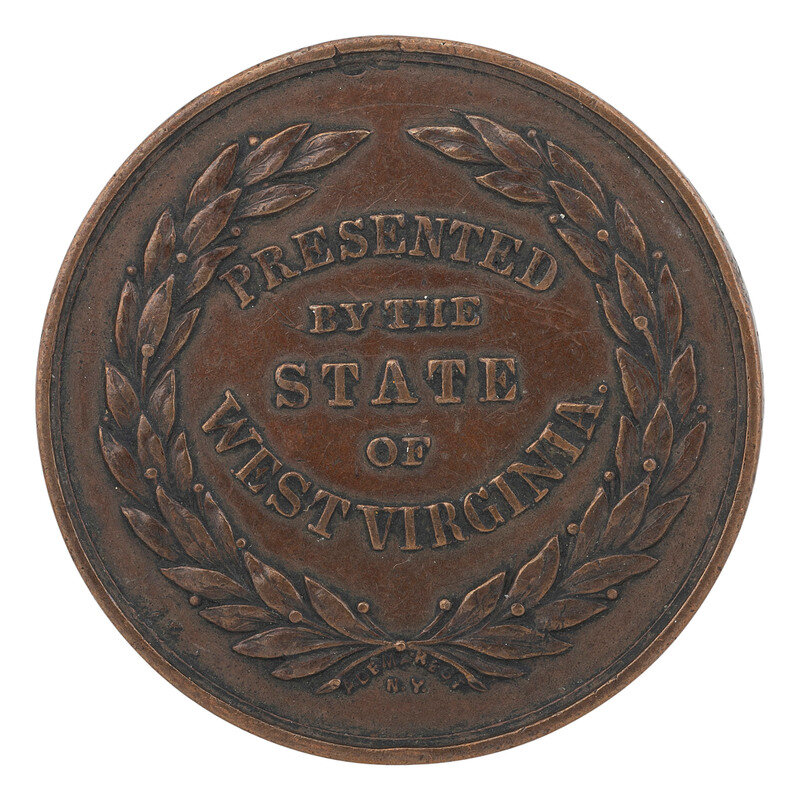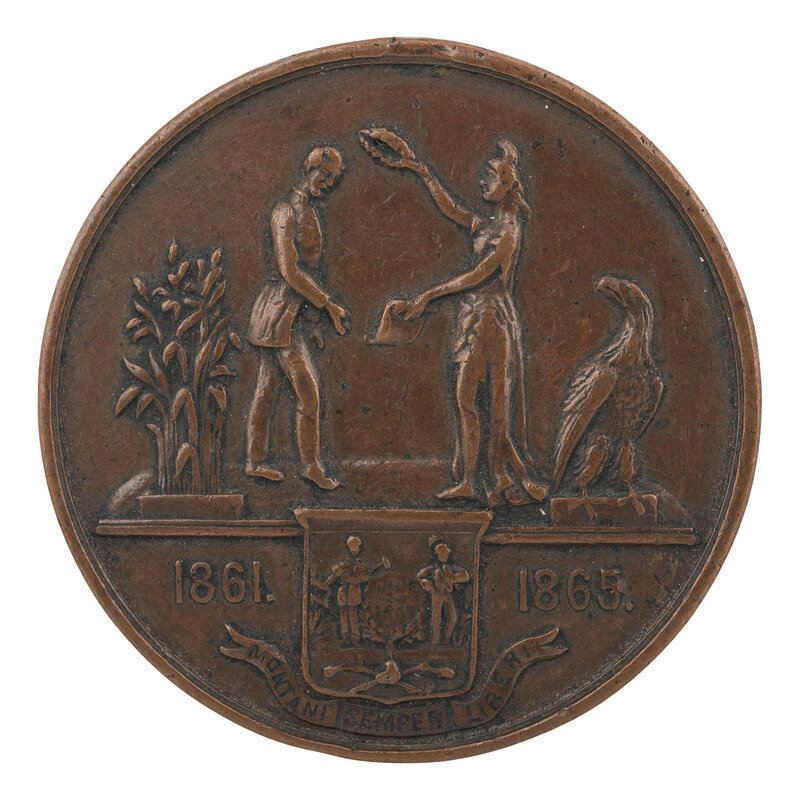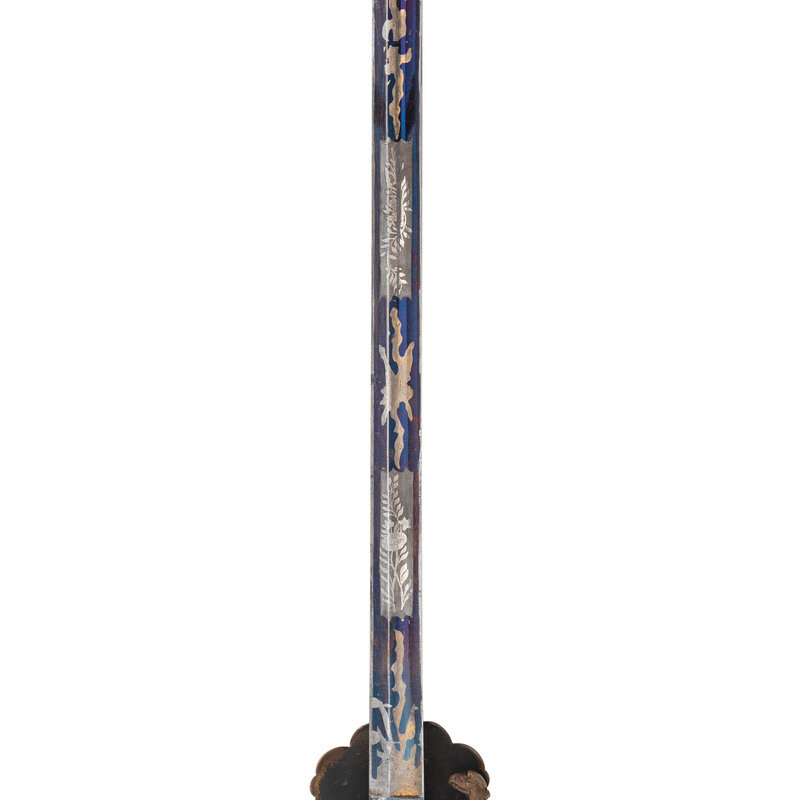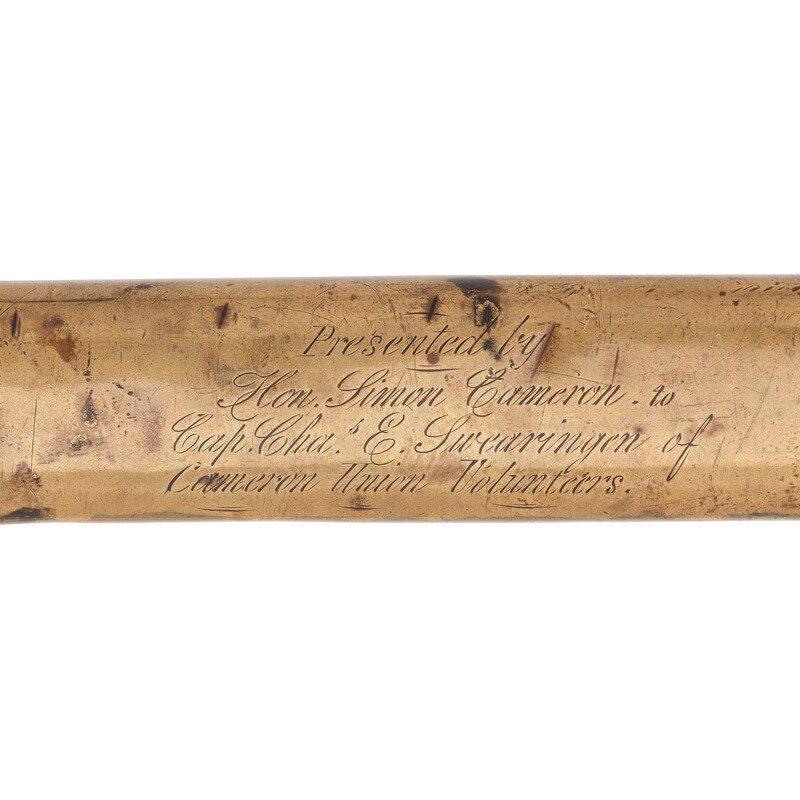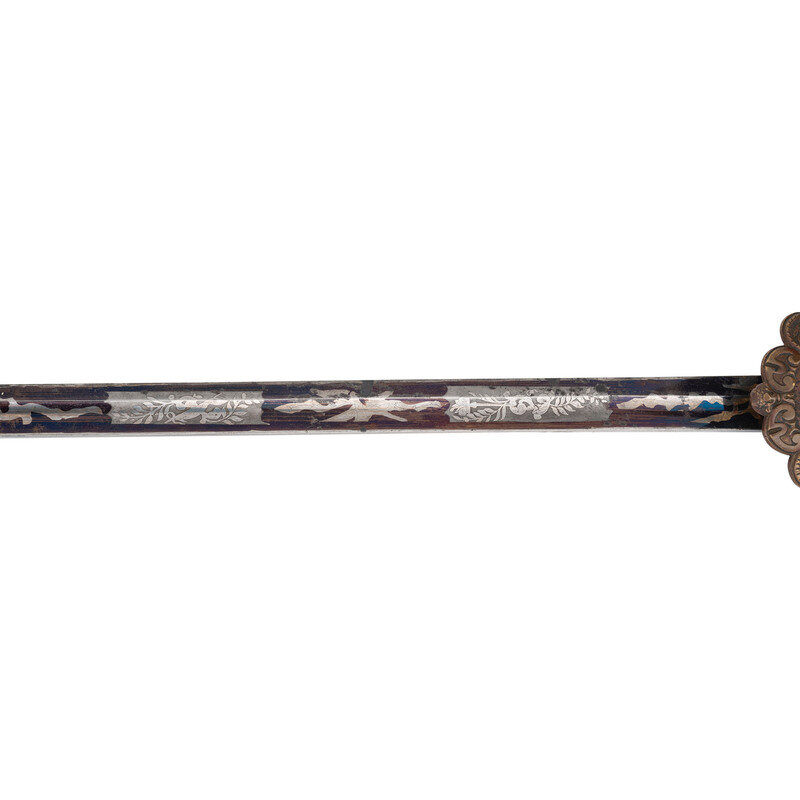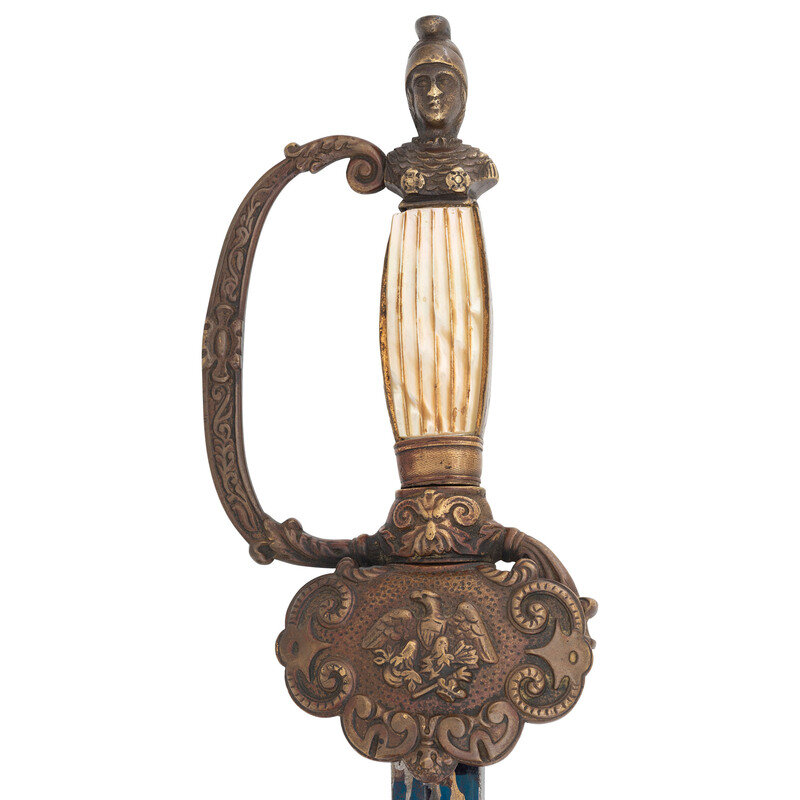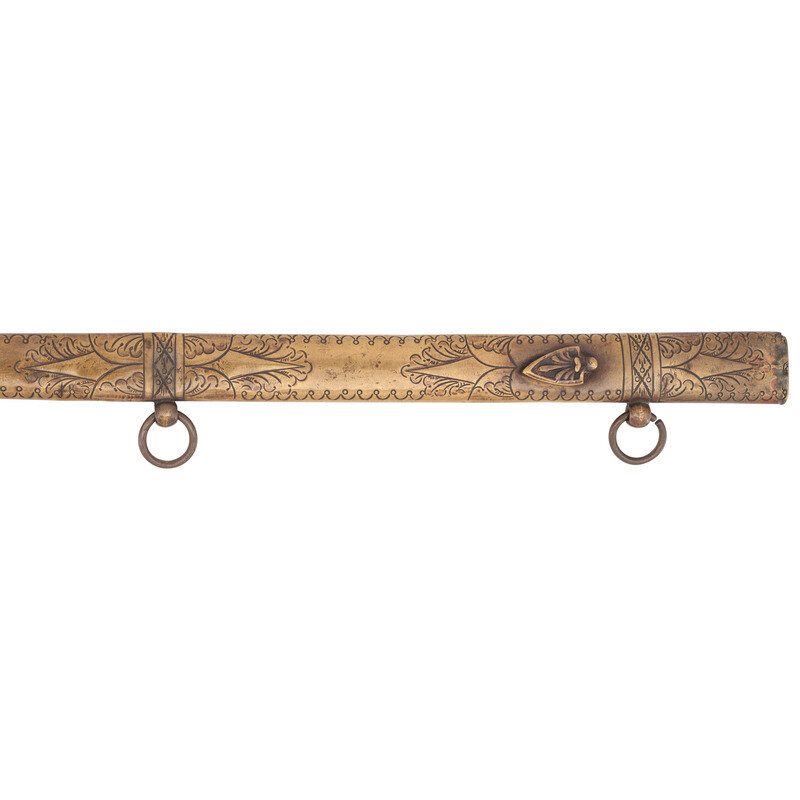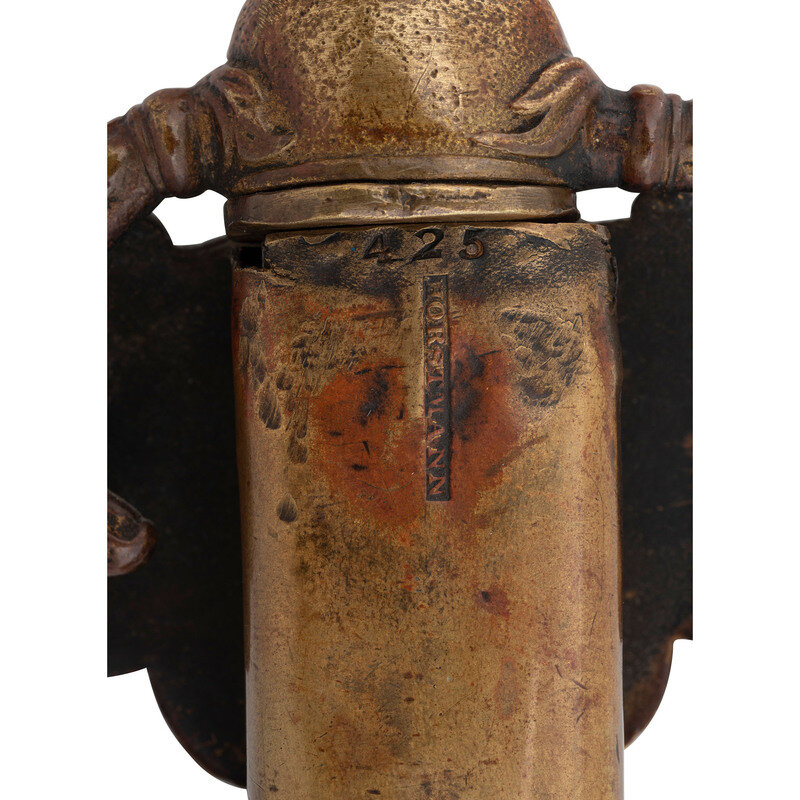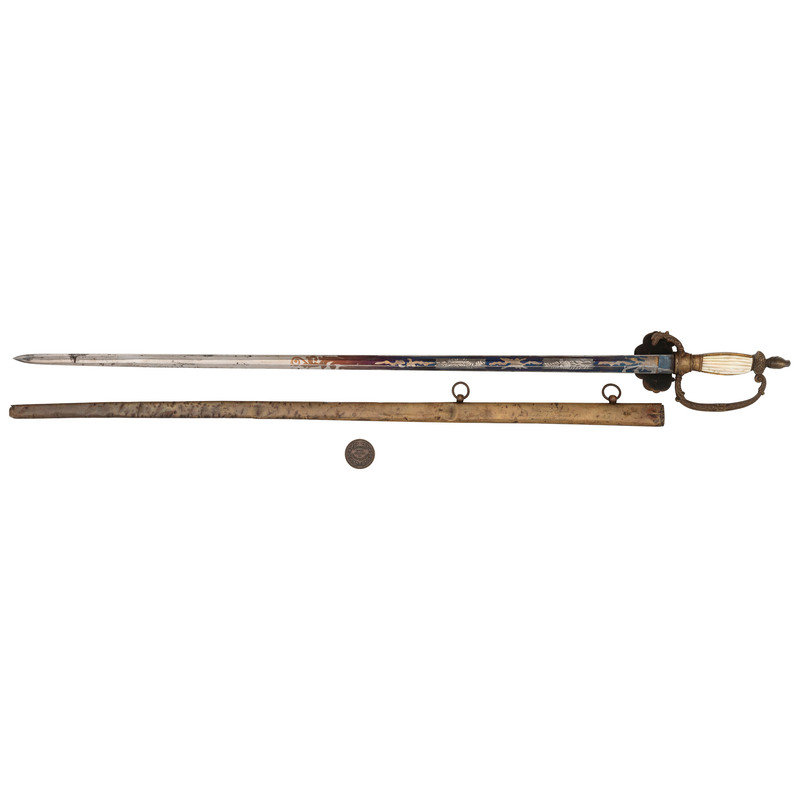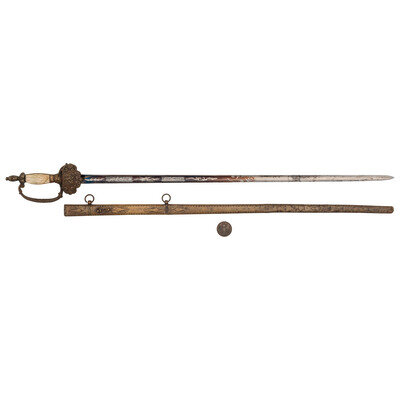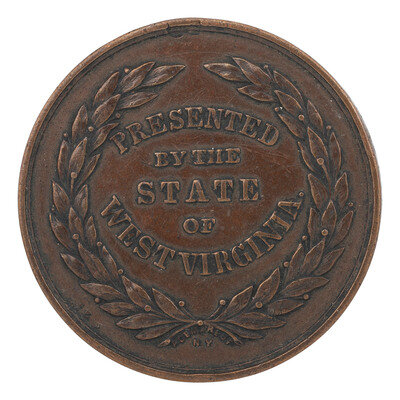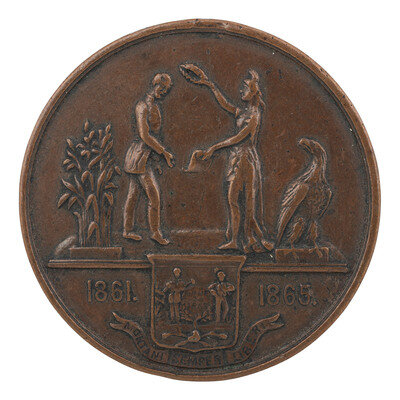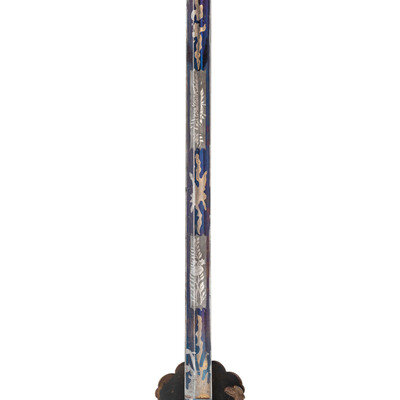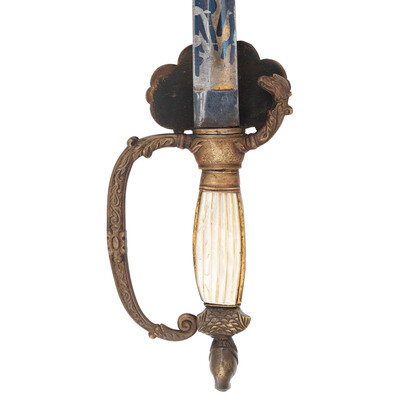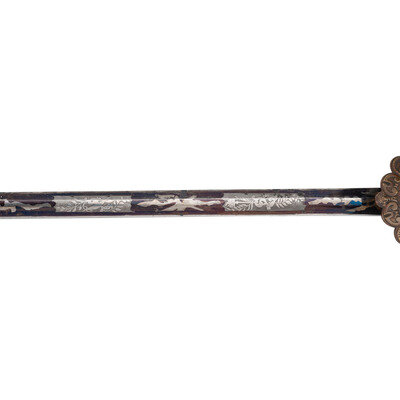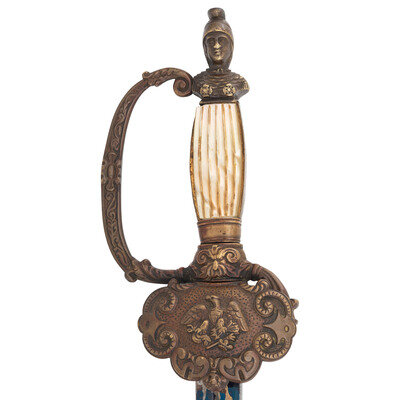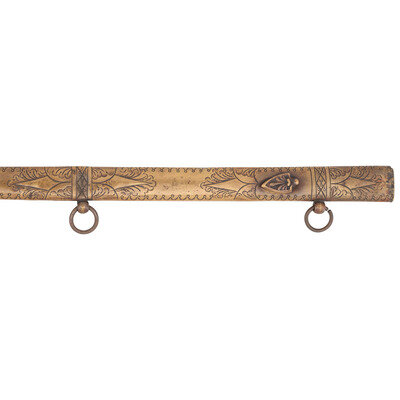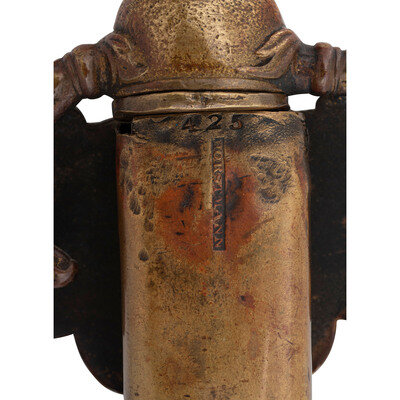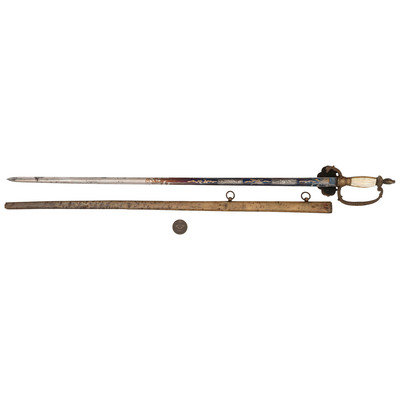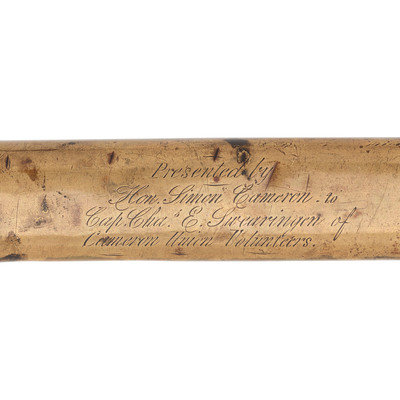31.25" straight single-edged spear point blade, 36.75" in overall length. Blade with a nearly full-length stopped median fuller and a flat spine. 5.25" gilt brass hilt with knuckle bow, eagle-head quillon, fixed clamshell counter guard with spread-winged eagle motif and Lady Liberty figural pommel cap. Reeded mother of pearl grip scales. Blade acid etched with blue and gold highlights showing flowing foliate motifs along roughly 17.5" of its length, beginning at the ricasso. Sword is accompanied by its sheet brass scabbard which is decorated with foliate and geometric motifs and includes two suspension rings and a frog hook. The reverse throat of the scabbard is stamped HORSTMANN. Reverse of scabbard is engraved in four lines: Presented by / Hon. Simon Cameron to / Capt. Chas. E. Swearingen of / Cameron Union Volunteers.
Charles E Swearingen was the pre-war captain of the Pennsylvania Uniontown (Fayette County) militia known as the "Union Volunteers" which changed their name to the Cameron Union Volunteers to honor Pennsylvania Senator, and later Secretary of War, Simon Cameron. Period newspaper accounts mention the fact that on July 4, 1857 Cameron (via his representative Alfred Patterson) presented the militia company with a silk flag and four presentation swords, including Captain Swearingen's sword. The Cameron Union Volunteers became part of the 3rd Virginia Infantry (Union), a three-year volunteer regiment also known as the 3rd West Virginia Infantry, in the summer of 1861. This was due to the fact that the Pennsylvania levee of volunteers had already been filled. The regiment was formed during June and July of 1861 in Clarksburg, Wheeling and Newburg, VA. Cameron was promoted to major in December of 1861 with the commission backdated to July 20 of that year. While some records suggest that he resigned his commission on July 17, 1862, it appears that he served on the staff of the 3rd VA (WV) through its reorganization as mounted infantry in June of 1863 and later redesignation as the 6th WV Cavalry in January of 1864. Based upon one set of records, it appears he may have served through August of 1864. It is possible that the move to staff & field and then the reorganization of the regiment created somewhat confused records regarding his service. It is worth noting that the Historical Data Systems (civilwardata.com) website lists him as "Swearinger" not "Swearingen", clearly a typo as all period records clearly use the latter name. During the course of the war the 3rd/6th WV saw action at the following major engagements: McDowell, Cross Keys, Port Republic and Second Manassas. The regiment was also engaged in numerous smaller actions and skirmishes.
In addition to the sword, Charles E Swearingen's West Virginia Civil War discharge medal is included, named to him on the rim and a large binder of research regarding Swearingen and Cameron, including copies of period letters between the two, service records, sections of manuscripts and newspaper stories related to the two, and the sword.
